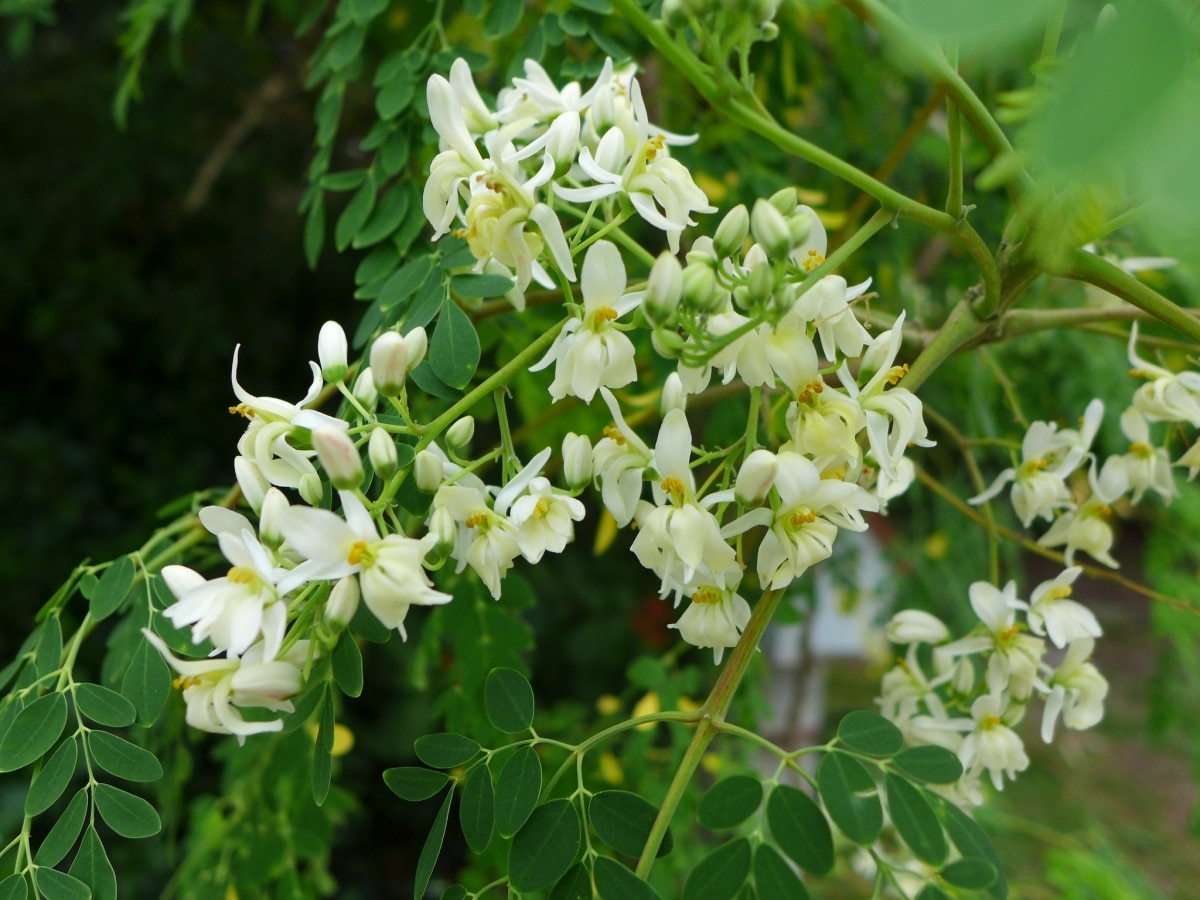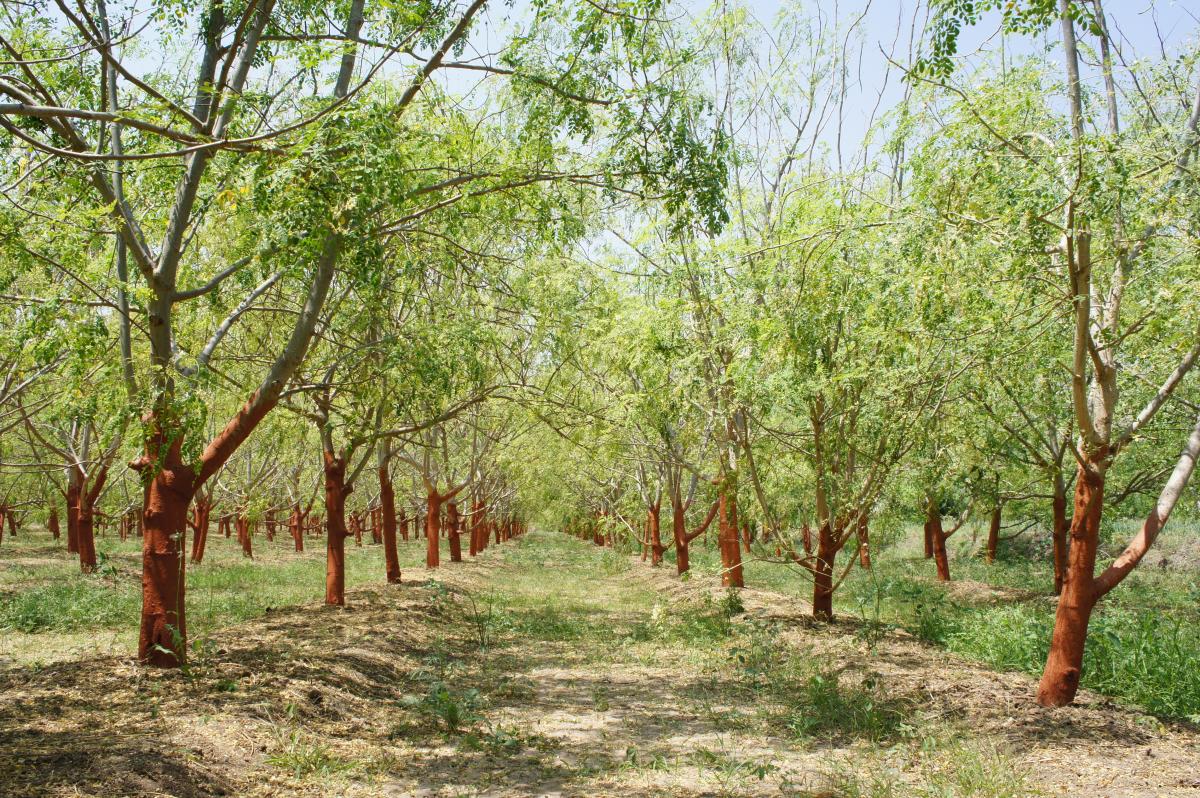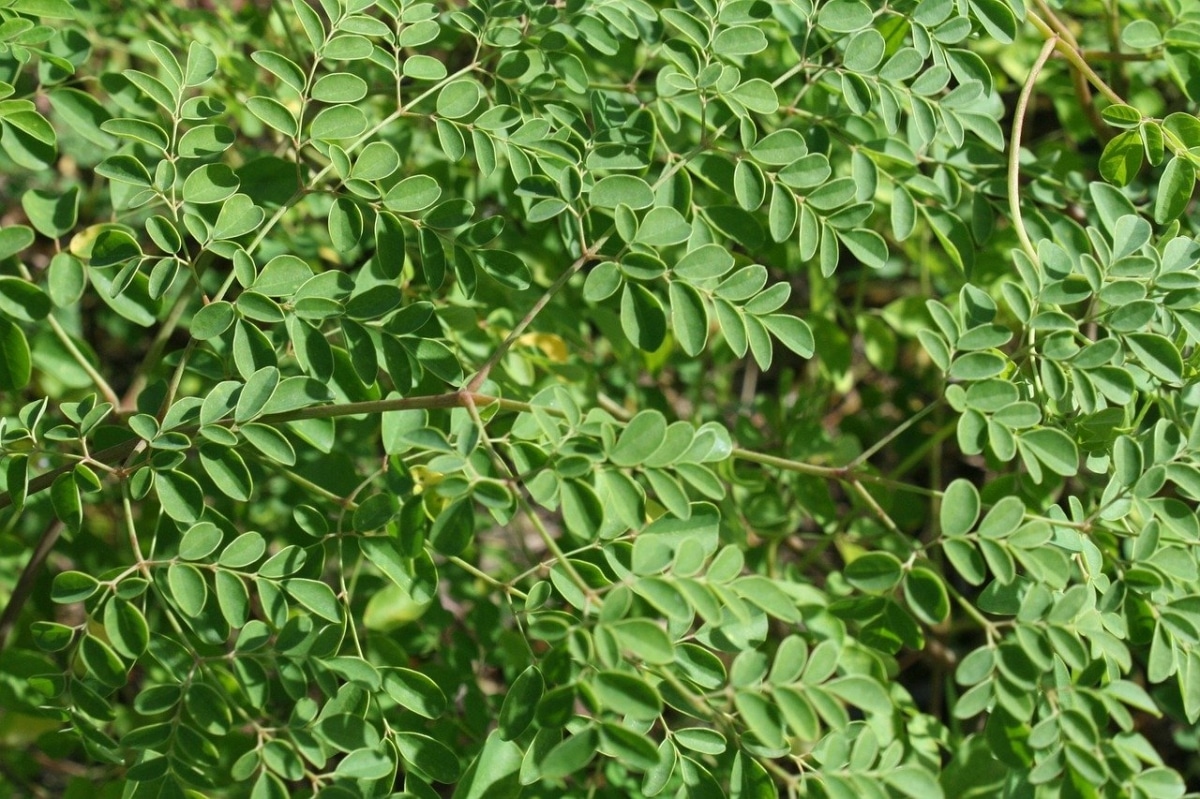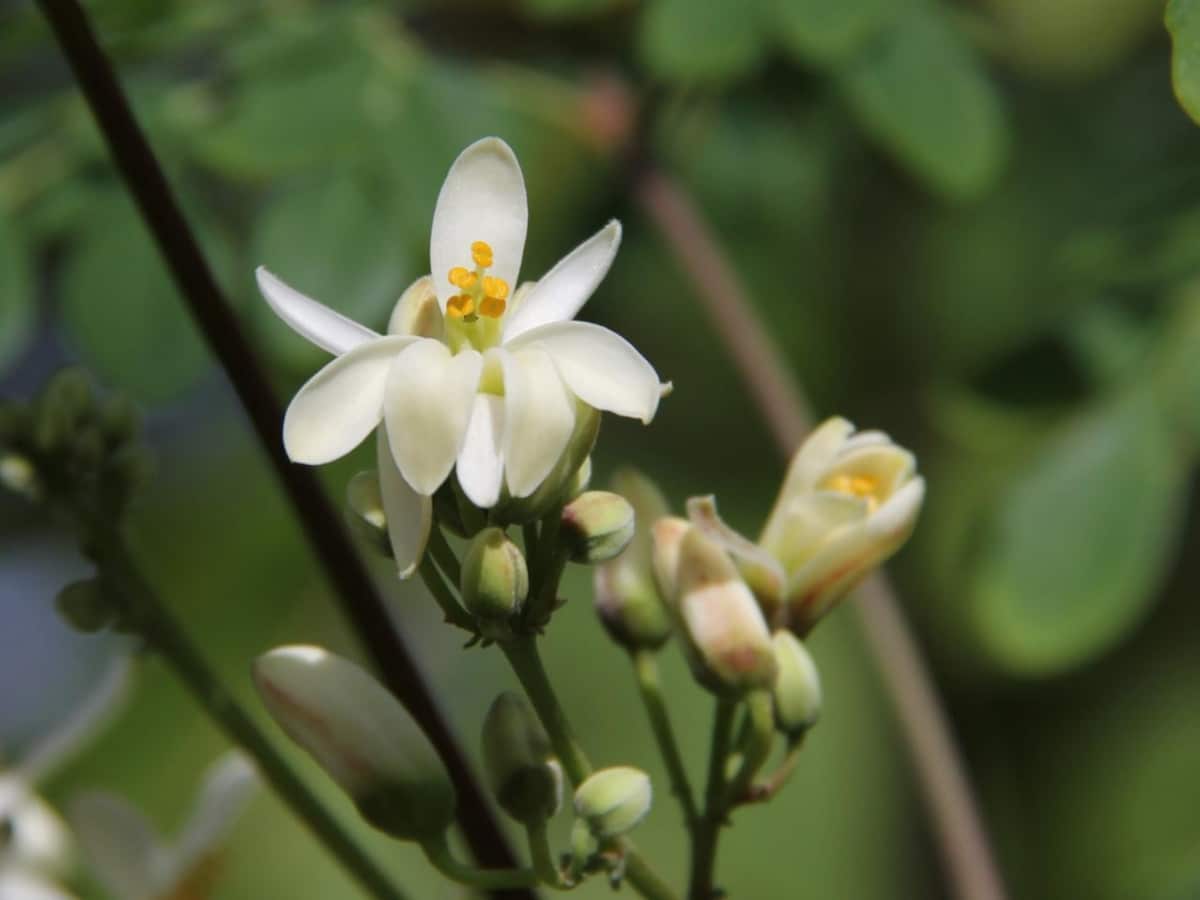
Image – Flickr/Scott Zone
There are ornamental trees that grow very fast, as is the case of the Moringa oleiferaWhich can do it at a rate of one meter per year if the weather is kind to her. The drawback is that, like other tree species that flower at an early age, their life expectancy is short. But that does not mean that it is not an interesting plant to grow in a garden; on the contrary.
Moringa resists very well drought and temperatures close to 40ºC. It even withstands weak and occasional frosts of up to -2ºC once established and is at least one meter tall.
What is moringa?

Image – Wikimedia/Crops for the future
It is a deciduous tree native to India, known by the scientific name Moringa oleifera, and by the common ben or moringa. It reaches a height of 12 meters maximum. Its branches are hanging and fragile, brittle, and from them sprout green tripinnate leaves that measure up to 60 centimeters long.
It can flower during its first year of life, and it will do so by producing fragrant white or cream-colored flowers about an inch wide. Shortly after, the fruits will ripen, which are brown pods between 2,5 and 30 centimeters long, inside which we will find brown seeds with three wings.
What is?
The moringa tree has many uses, which are:
- Ornamental: it is a plant that can be grown in sunny gardens. It provides some shade and, as we will see below, it does not require much care.
- Green manure: the leaves can be used to fertilize the land.
- Culinary: practically all its parts are edible. The leaves and flowers can be eaten raw or in salads; the roots have a spicy flavor so it is advisable to cook with other foods, and the seeds are roasted, although you should know that their taste is somewhat bitter.
- Cattle feed: Moringa is used to feed cows, pigs, goats and other animals.
- Medicinal: according to a scientific study published in 2006, moringa has anti-inflammatory, hypoglycemic and hypocholesterolemic properties, among others.
How is moringa cared for?
The ben tree is a low-maintenance plant with which we can have a garden, or if you want a patio or terrace, well decorated. But yes, it is important to know its needs, since unfortunately it is not a species that can be grown anywhere:
Climate
First we are going to talk about the climate, since it is what will determine whether or not it survives in the area where we want to have it. Starting from this, you have to know that moringa it is a tropical species, which is why if it is grown in a place where there is frost, it will have to be protected or in a greenhouse or in a room with plenty of light until spring returns.
Location
- Abroad: it will be placed in a sunny place, and if it is going to be planted on the ground, it is advisable to place it at least 3 meters from walls, and about 5 meters from other trees. In this way, you will achieve normal growth, and not with a crooked trunk and/or branches.
- Indoors (during winter): if there is no other choice but to protect it, it will be placed in a room where there is a lot of light, but always away from drafts. Likewise, it is important that the pot is rotated a little every day, since otherwise it could tilt.
Soil or substrate
- Garden land: it is a tree that grows in light soils with excellent drainage. For this reason, if the soil is very compact and heavy, it is advisable to make a hole as large as possible (at least 1 x 1 meter) to first fill it with a layer of clay or volcanic clay (for sale). here), and then with a mixture of peat and perlite in equal parts.
- Substrate for the pot: if you are going to choose to have moringa in a pot, you simply have to fill it with universal growing substrate for plants that has perlite (on sale here).
Irrigation

We are talking about a plant capable of resisting drought, but only if it has been planted in the ground for at least a year. Indeed: if it takes less or if it is in a pot, we cannot neglect watering, especially if we have it in a container. Because, we recommend watering an average of two or three times a week in the middle of summer, and when the temperatures drop, space out the waterings more and more.
Subscriber
It is highly advisable to pay moringa while it is growing, especially if the winter in our area is cold. And it is that, the more you can grow while the weather is good, the more chances you will have to arrive alive the following spring.
For this reason, what better way to use quick-efficiency fertilizers, such as the guano that you can buy here. It is very concentrated, so you only have to add a small amount at a time. Of course, you must follow the instructions on the package.
Multiplication
La Moringa oleifera multiplies easily by seeds. You just have to follow these steps:
- The first is to submerge them in water for a few minutes. This will help us to know which ones are viable (which will be the ones that sink) and which ones are not.
- Then, we will fill a pot -with holes in its base- with substrate for seedbeds as this.
- Then, we will place two seeds in it, separated from each other, and cover them with a little substrate.
- Finally, we will water and take the pot outside, in a sunny place.
If they are fresh they will germinate soon, in about ten days.
Plagues and diseases
The pests and diseases that it can have are aphids, the larvae that eat the leaves, as well as alternaria and fusarium fungi.
Rusticity
It does not support frosts, only if they are up to -2ºC, occasional and last a short time. In addition, for it to have a better chance of surviving the winter, it is crucial that it be as healthy as possible, so we must not forget to pay it while it is growing.

Image - Flickr / Mauricio Mercadante
What do you think of the moringa tree?
Very good summary, thank you. top 10… congratulations
Thank you. A greeting.
Very good information.
Thank you very much, José Aurelio.